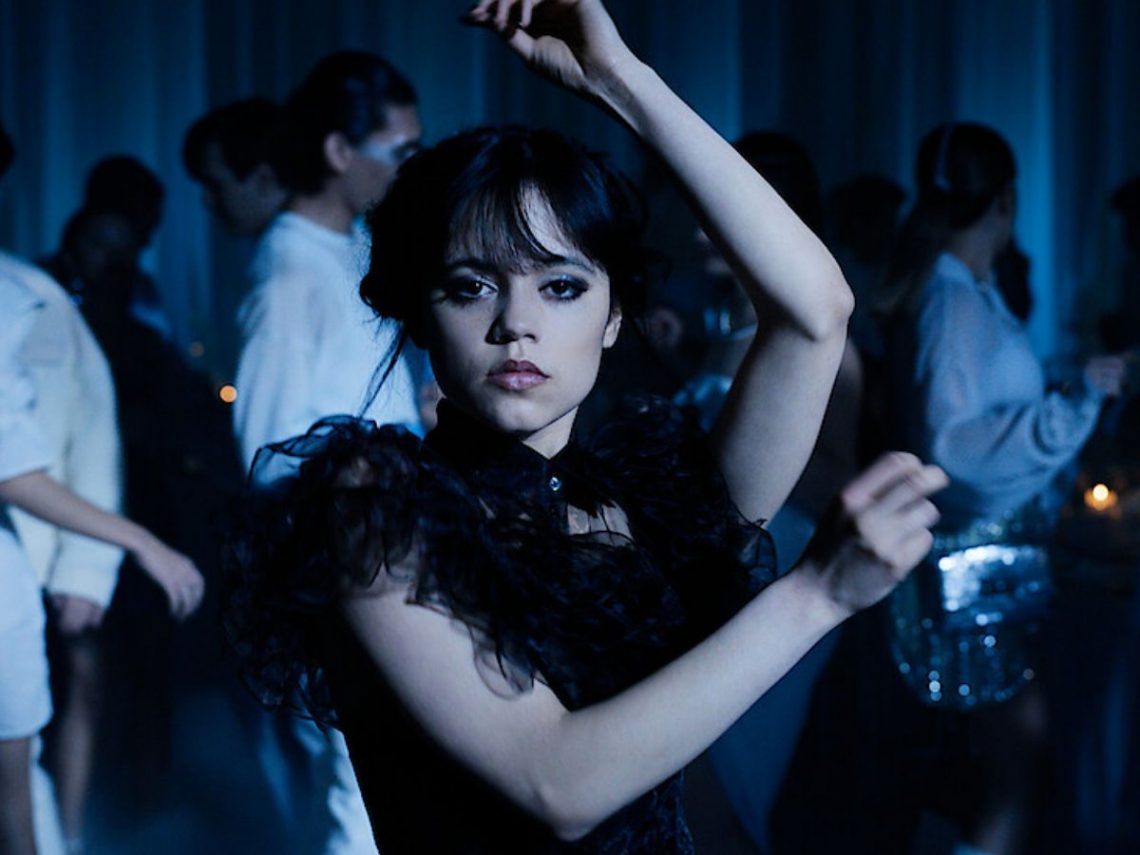
How did Jenna Ortega get her part in the Netflix horror series ‘Wednesday’?
It’s not exactly easy for an actor to effortlessly blend gothic charm, deadpan humour, and a touch of modern edge—especially when it comes to a character as beloved as Wednesday Addams. Christina Ricci mastered the performance at the young age of ten, but they are big boots to fill, especially for someone whose heart is with film and not television. Jenna Ortega has since become synonymous with the cynical child, and it’s all thanks to Tim Burton’s unrelenting pursuit of finding the perfect candidate.
Historically, the character Wednesday appears cold, stoic, morbid, and emotionally reserved, often at the expense of those around her. Although she loves her family, she rarely shows emotion, her darkness manifesting as a mesmerising and often comedic aspect of her broader personality. When Burton set out to recreate the coveted fictional character, he wanted to remain true to her cultural appeal while adding a certain sparkle of modernity.
Of course, with Burton at the helm, there’s always an expected layer of glossy, gothic expressionism, so casting a modern-day Wednesday had to fit nicely with his broader artistic vision while adding something new to a role that had been performed and perfected repeatedly. At the time, Ortega was trying to bag more film opportunities following a fun of modest television shows, so when Burton approached her about the prospect of featuring in his new project, it didn’t feel like the right direction to go in.
The main aspect of her reservations sparked from her desire to take on more Hollywood-level roles, but she also wasn’t sure Wednesday would gain any traction. Without reading any scripts or seeing any visuals, she found it difficult to buy into the entire idea, and that wasn’t a reflection of Burton’s capabilities. If anyone were to pull it off, it would be him. “I was scared that signing on to another television show could prevent me from doing other jobs I really wanted and cared about,” the actor explained.
“[He] is such a legend, and we just happened to get along very well,” she continued. “But even then I said, ‘Ah, no — I think I’m OK,’ a couple [more] times.” When Ortega finally caved, she came to set with a heightened sense of wariness, not about whether the show would do well but because she felt she had a duty to make sure she voiced any concerns, especially when it was script-related. Though this demeanour earned her a significant portion of backlash, she stood by her decision to remain cynical, even if it came across as slightly “unprofessional”.
“Everything that [Wednesday] does, everything that I had to play, did not make sense for her character at all,” Ortega later reflected. “I grew very, very protective of her, but you can’t lead a story and have no emotional arc because then it’s boring and nobody likes you.” Thankfully, her high standards paid off, and Wednesday catapulted her to a level of global fame that attracted far more opportunities than she could have ever imagined, including many in the film realm.
What inspired the Wednesday dance scene?
One of the most iconic scenes to appear in Burton’s Wednesday is the popular dance scene. Soundtracked to The Cramps’ ‘Goo Goo Muck’, Ortega channelled various alternative and gothic icons by having Wednesday dance like a mix of Siouxsie Sioux’s theatrical flair, Bob Fosse’s sharp, angular choreography, and the quirky, eccentric movements inspired by 1980s goth club culture.
The entire performance perfectly embodies Wednesday’s personality, showing her as an unpredictable, unconventional, and abstract presence who refuses to bow down to generic expectations. Although it’s easy to assume that the entire scene was choreographed to the nines, Ortega actually rather impressively conducted the entire thing herself.
“I choreographed that myself!” Ortega told NME. “I’m not a dancer and I’m sure that’s obvious. I’d gotten the song [‘Goo Goo Muck’] about a week before, and I just pulled from whatever I could… it’s crazy because it was my first day with COVID, so it was awful to film.” Although she later felt she could probably perform the entire scene better had she had the opportunity to do another take, the version that we see ended up falling into the hands of internet meme culture, forever solidified as one of the greatest-ever scenes of modern television.